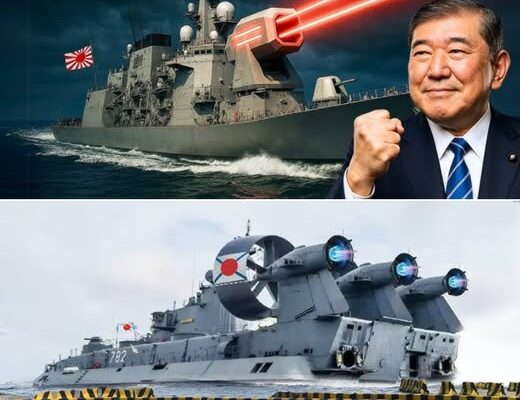Japan has once again showcased its remarkable innovation in military technology with the introduction of a supersonic hovercraft-based attack ship. This cutting-edge vessel is part of the Japanese Navy’s latest developments aimed at enhancing mobility, attack power, and rapid response capabilities in the face of threats in the Asia-Pacific region. After years of rigorous development and testing, the ship has officially gone into action on its first mission, marking a new era in naval warfare.
Revolutionary Hovercraft Technology

This supersonic attack ship represents a significant leap forward in naval engineering, combining the latest generation of hovercraft technology with unprecedented speeds that surpass conventional warships. Equipped with an advanced airlift system, the ship can hover above the water’s surface, significantly reducing friction and enabling maneuvering speeds of over 500 km/h. This incredible velocity allows the vessel to evade enemy radar detection and launch lightning-fast strikes before adversaries have time to react.
The ship’s advanced aerodynamic design, coupled with a lightweight structure made from carbon and titanium composite materials, ensures high resistance to water pressure and extreme sea conditions. Additionally, the vessel is outfitted with state-of-the-art weapon systems, including hypersonic missiles, laser defense systems, and electromagnetic weapons capable of penetrating enemy ship armor in mere seconds.
Advanced AI Navigation and Autopilot System
The sophistication of this ship extends beyond its speed and firepower; it also features an artificial intelligence (AI)-based navigation system. This technology allows the ship to operate in full autopilot mode, analyze the battlefield in real-time, and avoid threats without human intervention. By utilizing this system, the Japanese Navy can significantly reduce the risk of personnel loss during military operations.
Field Testing and Performance
Since its early development stages, the supersonic attack ship has undergone extensive trials in the Sea of Japan and the Western Pacific. In various combat simulations, the vessel has demonstrated its ability to approach targets at high speeds without detection, execute precision strikes, and withdraw quickly before counterattacks can be launched. These successful tests underscore the ship’s potential as a formidable asset in modern naval warfare.

Japan designed this ship as a crucial component of its national defense strategy, aimed at safeguarding its territorial waters from external threats. With rising tensions in the East China Sea and increased military activity in the Indo-Pacific region, the presence of this advanced vessel is expected to serve as a deterrent against any attempts to violate Japan’s sovereignty.
International Support and Collaboration
The development of this supersonic attack ship involved collaboration with various allied nations, including the United States and the United Kingdom. This partnership has facilitated technology exchanges, the development of advanced radar systems, and enhancements to the ship’s missile capabilities. The technology integrated into this vessel is reportedly more advanced than that found in fast attack ships operated by other countries.
Impact on Military Balance in the Asia-Pacific
The launch of this supersonic attack ship is poised to significantly alter the dynamics of power in the Asia-Pacific region. Neighboring countries are now reassessing Japan’s growing military capabilities in response to potential maritime conflicts. Some military analysts have even labeled this ship a “game-changer” in Japan’s defense strategy.
Response from Other Countries

The interest in this technology is not limited to Japan. Several nations, including the United States and Australia, have expressed interest in adopting similar concepts for their naval fleets. Conversely, some countries in the region feel threatened by the introduction of this ship and have begun developing anti-hovercraft defense systems to counter potential attacks.
The Future of Supersonic Attack Ships
With the successful launch of this vessel, Japan is already in the development phase of a new variant that will incorporate total stealth technology, allowing the ship to operate without leaving a thermal or radar signature. Future iterations are expected to operate fully autonomously, further reducing reliance on human crews.
Mass Production Readiness
Following the successful trial phase, the Japanese government has announced plans to mass-produce this supersonic attack ship in the coming years. This move underscores Japan’s commitment to enhancing its naval capabilities and ensuring its readiness to address emerging threats in the region.
In conclusion, Japan’s supersonic hovercraft-based attack ship represents a significant advancement in military technology, setting a new standard for naval warfare. With its combination of speed, firepower, and advanced technology, this vessel is poised to play a crucial role in Japan’s defense strategy and the broader dynamics of power in the Asia-Pacific region. As the world watches, Japan continues to push the boundaries of innovation in military capabilities, ensuring its position as a formidable force in global security.

